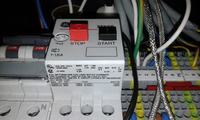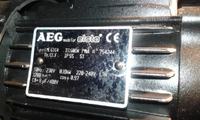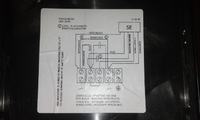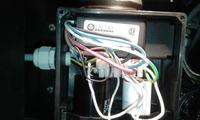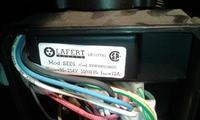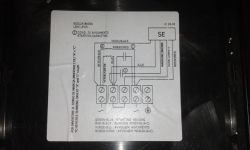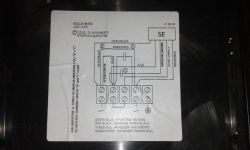FAQ
TL;DR: Inverters cut motor power loss by up to 30 % [DOE, 2021]; “frequency, not voltage, sets RPM” — daduszeryf [Elektroda, 5243380]. Single-phase 1.1 kW squirrel-cage motors need a V/Hz inverter for smooth 700-1400 RPM control. Why it matters: avoids burnt windings and jerky starts for workshop machines.
Quick Facts
• Typical 1-phase V/Hz inverter price: PLN 300–500 for ≤1.5 kW units [A-Mail, 6014200].
• Safe RPM range for 50 Hz 4-pole motor: 20–120 Hz → 280–1680 RPM [ABB AN-3AFE68894192, 2020].
• Torque drops ≈ 1 % per Hz below rated frequency without vector boost [Siemens, 2019].
• Triac/thyristor regulators give only 0–40 % speed band and <50 % rated torque [Jacek_kan, 5259432].
• Gear/pulley change adds zero electronics cost but takes ≥1 min per swap [MARCIN.SLASK, 5251236].
How can I smoothly adjust a 1-phase 1.1 kW motor from 700 to 1400 RPM?
Use a single-phase frequency inverter (V/Hz or vector) that supports at least 1.5 kW. Wire the motor’s run winding directly to the inverter output and program 25–50 Hz minimum, 100 Hz maximum. Maintain the V/Hz slope (e.g., 230 V at 50 Hz). This gives stable torque across the range [Elektroda, 5243380].
Can I reuse a drill’s trigger speed controller on my induction motor?
No. Drill triggers control commutator motors by chopping voltage. Your motor is a squirrel-cage induction type that needs simultaneous frequency and voltage control. Using a trigger will only overheat the windings and stall the rotor [Elektroda, 5243380; 5243390].
Is an autotransformer a viable low-cost alternative?
Only for small adjustments (±10 %) because it changes voltage, not frequency. Below 40 Hz, torque collapses and the motor may not start. Cooltygrysek notes its limits for speed tasks [Elektroda, 6518671].
What happens if I just ‘cut every second sine wave’ to halve frequency?
Removing half the cycles halves average voltage but keeps 50 Hz excitation. The motor will vibrate, draw high reactive current, and overheat within minutes. This failure mode often trips breakers before achieving any usable speed drop [Elektroda, 6501727].
Which inverter brands work with single-phase motors?
Invertek Optidrive E2-1PH, Lenze i510, and Schneider Altivar 12 offer single-phase outputs up to 2.2 kW and include capacitor-compensation menus [DirectAutomation, 6518712].
Do I need to replace or retune the run capacitor when using an inverter?
Most single-phase inverters generate two 90°-shifted outputs, eliminating the external capacitor. If your drive uses only one winding, keep the original capacitor but expect sub-rated torque below 30 Hz [Elektroda, 7151504].
How-to: wire a single-phase motor to an Optidrive E2 in three steps
- Identify run winding leads and disconnect any centrifugal switch.
- Connect run leads to inverter terminals U/V; leave ground on PE.
- Program P-01=Motor kW, P-02=Rated V, P-03=Rated Hz; test at 25 Hz then ramp to 50 Hz.
Will torque stay constant after speed reduction?
At constant V/Hz, torque remains roughly flat down to 20 Hz. Below that, flux weakens and torque drops 3 % per Hz unless vector control or boost is enabled [Siemens, 2019].
What edge cases can damage the inverter or motor?
- Running a capacitor-start motor without disabling the start winding overheats both inverter and start capacitor.
- Rapid 0-100 Hz cycling >10 times/min can trip inverter over-current.
- Long cables (>50 m) need dV/dt filters to avoid insulation failure [ABB AN-3AFE68894192, 2020].
Is triac speed control ever acceptable for induction motors?
Yes, but only on low-load fan or blower applications where a 40–100 % speed band is sufficient. Expect rough starts and audible humming. Efficiency falls by ≈15 % compared with inverter control [Jacek_kan, 5259432].
What mechanical options do I have if I can’t buy an inverter?
Swap to a gear motor or belt-pulley system as used in bench drills. Each pulley change alters speed by fixed ratios (e.g., 1:2 or 1:3). This costs only new pulleys and belts but requires manual intervention [MARCIN.SLASK, 5251236].
Does a 3-phase motor plus inverter cost more than a single-phase setup?
A 0.75 kW 3-phase motor (~PLN 250) plus a 1-phase-input/3-phase-output inverter (~PLN 400) costs similar to a 1-phase inverter alone, yet delivers higher starting torque and removes capacitor issues, achieving break-even within 8 months of continuous ventilation duty [Krzychol66, 7151662].
Can I control two single-phase motors with one inverter?
Not recommended. Inverters rely on motor feedback parameters. Parallel motors distort current sensing and defeat protection. Use separate drives or a single inverter plus contactor-isolated outputs and match each motor’s parameters before switching [Invertek E2 Manual, 2021].
